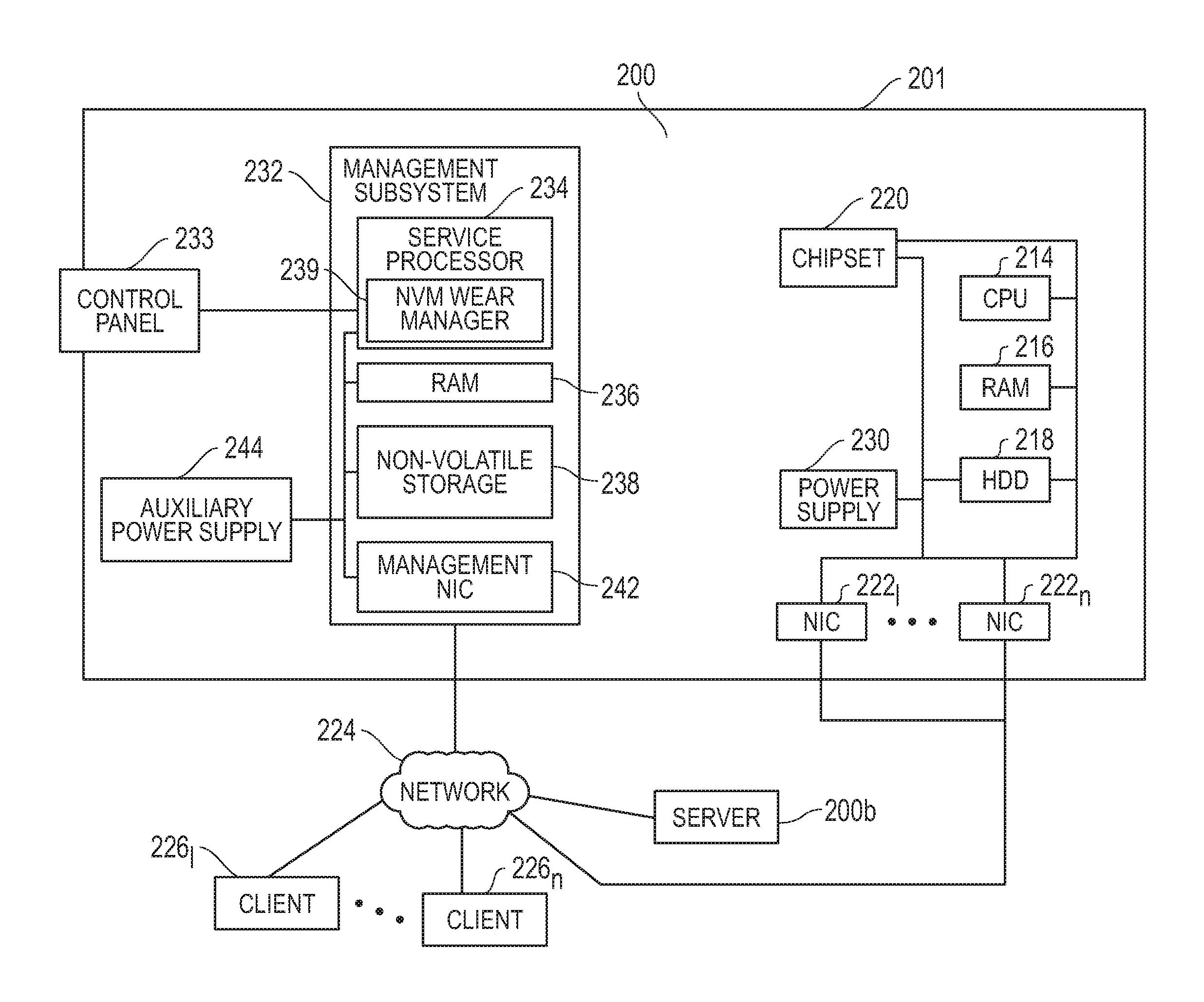Systems and methods for tracking and managing non-volatile memory wear
a non-volatile memory and wear technology, applied in the field of information handling systems, can solve the problems of preventing customers or field users from updating firmware in the field, and achieve the effect of preventing non-volatile memory wear and enhancing predictive failure determination
- Summary
- Abstract
- Description
- Claims
- Application Information
AI Technical Summary
Benefits of technology
Problems solved by technology
Method used
Image
Examples
Embodiment Construction
[0023]FIG. 2 is a block diagram illustrating one exemplary embodiment of an information handling system configured in the form of a server 200 having a plurality of information processing components disposed in a housing 201 including a CPU 214, RAM 216, a hard disk drive (HDD) 218, a chipset 220 and plural network interface cards (NIC) 222. In one embodiment, CPU 214 and other components of server 200 may be configured to perform one or more information processing and / or network routing tasks, e.g., for client information handling systems communicatively coupled to server 200 by network 224. It will be understood that the disclosed systems and methods may be implemented with a variety of other types of information handling systems besides servers, e.g., desktop computers, notebook computers, etc. Specific examples of other types of information handling systems with which the disclosed systems and methods may be implemented include, but are not limited to, data center servers, cloud...
PUM
 Login to View More
Login to View More Abstract
Description
Claims
Application Information
 Login to View More
Login to View More - R&D
- Intellectual Property
- Life Sciences
- Materials
- Tech Scout
- Unparalleled Data Quality
- Higher Quality Content
- 60% Fewer Hallucinations
Browse by: Latest US Patents, China's latest patents, Technical Efficacy Thesaurus, Application Domain, Technology Topic, Popular Technical Reports.
© 2025 PatSnap. All rights reserved.Legal|Privacy policy|Modern Slavery Act Transparency Statement|Sitemap|About US| Contact US: help@patsnap.com



